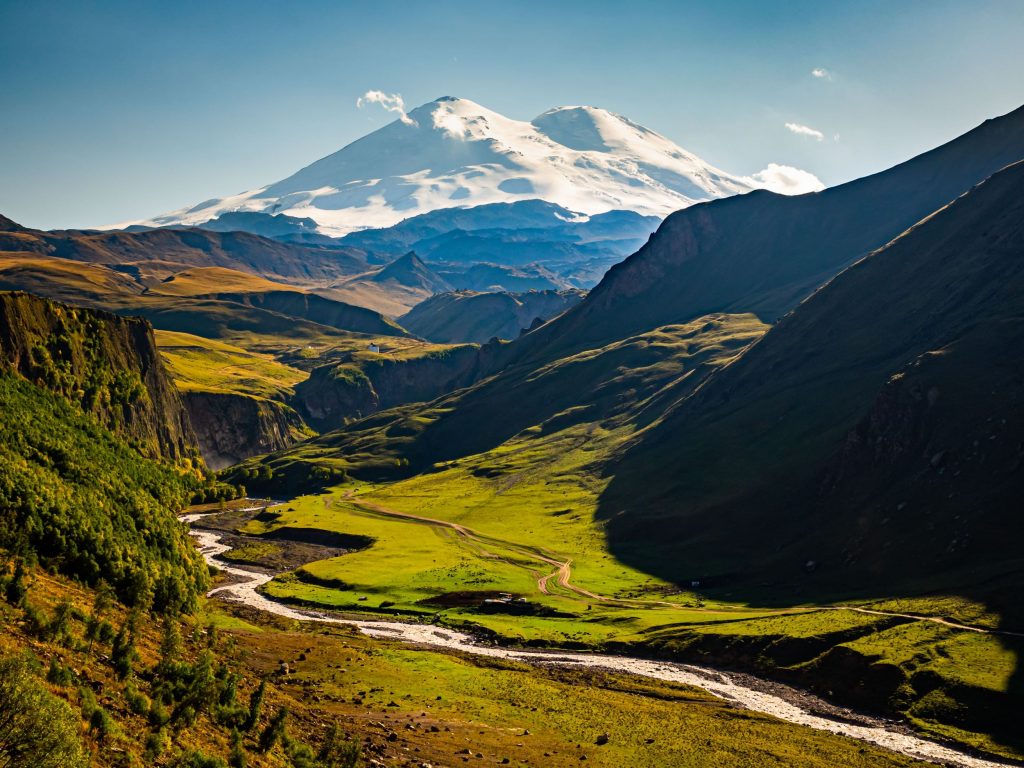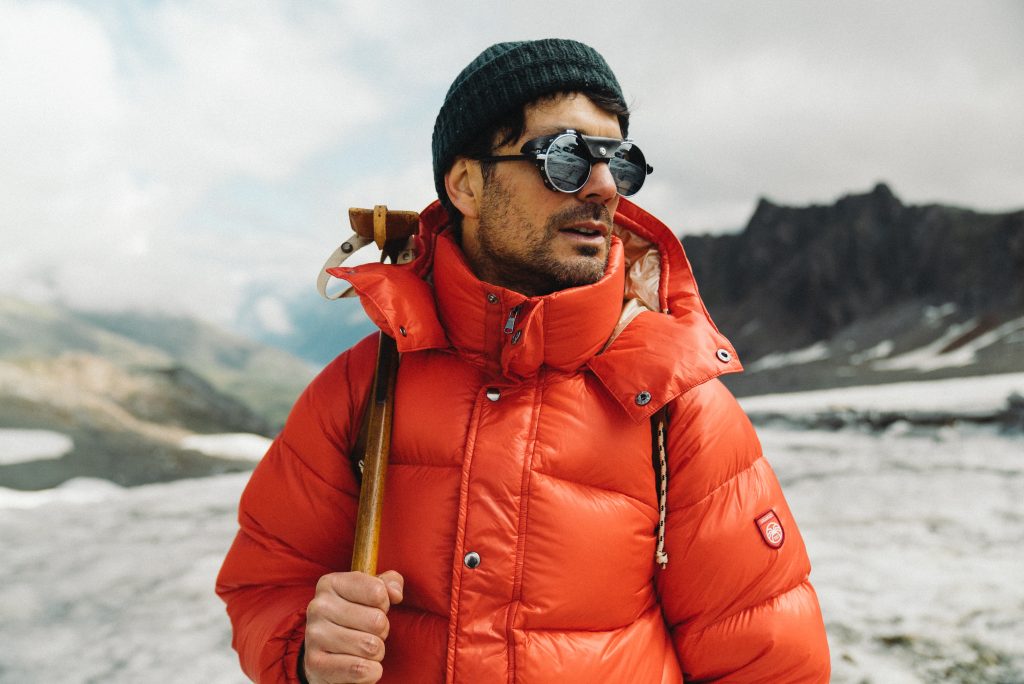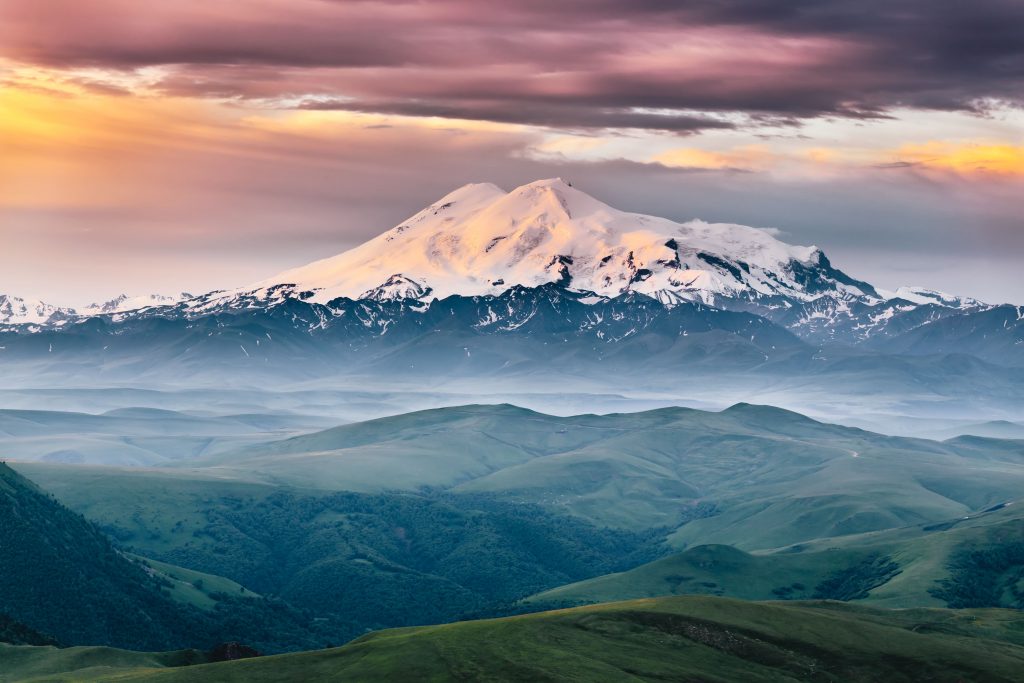
EXPEDITION TO ELBRUS - EQUIPMENT. WHAT TO BRING FOR THE HIGHEST CAUCASUS PEAK?
Decided - you're heading to Elbrus. The expedition plan is ready, tickets are booked, time to pack your backpack. Although the highest peak in the Caucasus is considered technically easy, you need to prepare for challenging conditions - even in the middle of a hot summer, a harsh winter awaits you at the summit. What should you bring on such an expedition? What equipment might come in handy? Check it out!
WHAT WILL YOU LEARN FROM THIS POST?
- What equipment will you need for an expedition to Elbrus?
- Which jacket will be the best for an expedition to Elbrus?
- What sleeping bag should you bring?
- How to assemble camping equipment for Elbrus?
- Will climbing equipment be necessary during the expedition to Elbrus?
EXPEDITION TO ELBRUS - EQUIPMENT
Perhaps it sounds strange, but at first glance, Elbrus doesn't look like a dangerous mountain. It is an extinct volcano, so its slopes descend quite gently. Among climbers, greater caution may be warranted for majestic Usba or its Caucasian brother, Kazbek, whose rugged ridge descends sharply. However, this doesn't mean that climbing Elbrus will be a walk in the park. Although you won't encounter rocky cliffs or other technical difficulties along the way, you may be surprised by demanding conditions.
Elbrus towers over the surrounding peaks by over 1000 meters, which means it is often plagued by strong winds blowing from different directions - its other name, the Lord of Whirlwinds, is not accidental. Climbers must also be prepared for rapid weather changes and significant fluctuations in daily temperatures. In July or August, the peak of the trekking season, the valleys will experience scorching summer, while higher elevations will be bitterly cold, winter-like. Temperatures at the summit can drop to -20°C. In such conditions, appropriate equipment, especially clothing, is of great importance.

WHAT TO BRING TO ELBRUS? CLOTHING
The attire for the summit assault should consist of several layers. The first layer is, of course, good thermal underwear, such as merino wool, which protects against both chilling and overheating. The thermal layer should provide thermal comfort and adequate breathability. It can be a combination of several warm but breathable shirts, such as stretch ones. The third layer is a hardshell jacket with waterproof and windproof properties. As for the lower part of the outfit, the minimum is thermal leggings plus warm softshell pants. As a precaution and for worsening conditions, it's worth having membrane pants in your backpack, preferably with zippers along the entire length of the legs so that you can put them on without removing your boots.
Since conquering the highest peak in the Caucasus requires acclimatization, expect to spend several days in the base camp, ascending and descending multiple times. Therefore, you should also have a less rugged set of clothes: lighter trekking pants, quick-drying and breathable t-shirts, a warmer sweater or fleece, and a sleeping set.
As climbing the highest peak of the Caucasus requires acclimatization, expect to spend several days at the base camp, ascending and descending multiple times. Therefore, you should also have a less bulky set of clothing: lightweight trekking pants, quick-drying, breathable shirts, a warmer jacket or fleece, and a sleeping bag.
DOWN JACKET
A down jacket will also be essential for the Elbrus expedition. It provides the most effective protection against cold - in terms of thermal properties, no synthetic insulation can match natural down. Regardless of how well you tolerate cold temperatures, it is safest to bring a reliable down jacket filled with highly resilient down. This jacket will come in handy during breaks and during the climb when the other thermal layers are no longer sufficient - and remember that the ascent begins in the middle of the night, at very low temperatures.
Our recommendation is, for example, the Heritage model, insulated with Polish goose down known for its excellent thermal properties. Its high resilience (750 cuin), optimized construction, and functional details make it the ideal jacket for high-altitude expeditions - it will perform well in the most challenging conditions.

ACCESSORIES
In such harsh conditions as at an altitude of 5,000 meters, hand protection is very important. For Elbrus, it's worth taking even 3 pairs of gloves: thin, yet warm liners providing basic thermal protection, windproof 5-finger gloves, and down mittens. The latter can literally save your fingers if the temperature drops significantly.
What else? A hat, preferably 2: a thin, warm balaclava and a classic hat, for example, made of merino wool. A buff is useful for neck protection - it works better than a regular scarf because you can pull it up to your nose if needed. For better protection against the cold on your legs, it's good to have 2 pairs of socks. If your pants are not equipped with integrated snow gaiters, invest in reliable gaiters.
Essential during the ascent to Elbrus are sunglasses, preferably glacier glasses with side shields that tightly protect your eyes from reflected snow radiation. At such high altitudes, UV radiation is truly dangerous - it can cause snow blindness and even permanently damage your eyesight.
BOOTS FOR ELBRUS
You must bring high-altitude mountaineering boots (D2) for Elbrus. Trekking footwear, even those that have performed well in the winter Tatras or Alps, will be insufficient. Climbing the highest peak of the Caucasus involves several hours of walking on the glacier, often in severe cold and strong winds. In such conditions, the necessary minimum is well-insulated and warm high-altitude mountaineering boots with a solid membrane to which you can attach automatic or semi-automatic crampons. However, the safest option would be a slightly more robust model - double boots equipped with removable inner boots.
If your luggage allows, it's also useful to bring lighter trekking shoes - they will come in handy during travel and while staying at the base camp.

EXPEDITION TO ELBRUS - CLIMBING EQUIPMENT
Essential equipment for Elbrus includes crampons, an ice axe, and telescopic poles (you can lean on them during long approaches, which helps save some energy). Although you won't encounter technically difficult or demanding climbing sections along the way, it's worth having a harness and rope with you - the final approach is quite steep, so in unfavorable weather, securing yourself with partners may be necessary.
Also, remember to bring a headlamp with spare batteries, a compass, and a map!
CAMPING GEAR. WHAT SLEEPING BAG FOR AN ELBRUS EXPEDITION?
The camping gear you need to bring to Elbrus depends on where you plan to spend the night. You can spend the night before the summit push in one of the shelters scattered at the height of the Gara-Bashi cable car stations or slightly higher. In that case, you'll primarily need a sleeping bag - the best sleeping bag for this type of expedition is a down model. It's lightweight and doesn't take up much space in your backpack, yet it offers excellent thermal properties. The overnight temperature in the shelter shouldn't drop below 0, but it's better to be prepared even for freezing temperatures. A reasonable minimum would be a down sleeping bag with a T-comfort temperature of around -5°C, such as the Core 550 or Radical 4Z models.
Under favorable conditions, some tourists shorten their summit push by camping in a tent at the so-called Skał Pastuchowa (4,700 meters above sea level). This saves about 4 hours of walking during the ascent. If you choose this option, you will need a sturdy tent resistant to strong winds, a well-insulated sleeping mat, and a warm sleeping bag. Consider only winter models filled with high-quality down (at least 700 cuin) that provide thermal comfort even at -15°C. Examples of such sleeping bags are the Radical 10Z (with excellent loft of 900 cuin!) or the Core 950.

EXPEDITION TO ELBRUS - ADDITIONAL EQUIPMENT
During the Elbrus expedition, you will also need cooking equipment: a stove, gas cartridge, cookware, and lightweight cutlery. Make sure that the stove works at high altitudes, and remember to ensure good ventilation when cooking inside the tent. The best food for high mountains is, of course, freeze-dried food. During the summit push, it's also recommended to have energy bars and gels, a thermos with tea, and water in a container protected against freezing.
What else? A first aid kit! It should contain the essentials for any mountain trip, as well as medications needed for altitude sickness. However, it's not enough to have them - you must know how to use them properly. It's also a good idea to pack a trash bag and a repair kit (needle, thread, patches, glue, tape) in case of equipment damage.
Of course, equipment is not everything. Even the most professional gear is useless if the climber lacks knowledge, experience, common sense, and mountain skills. When heading to a 5,000-meter peak, you need to know how to acclimatize, move in high mountains, use a map and compass, recognize symptoms of altitude sickness, administer first aid, and know when to abandon further ascent. If you have any concerns about your abilities, consider attending a winter high-altitude tourism course. You can also consider participating in an expedition organized by certified IVBV/IFMGA/UIAGM guides.
And when it comes to assembling equipment, visit pajaksport.pl - you'll find excellent down jackets and sleeping bags for high-altitude expeditions. Models like Radical and Core have been supporting professional mountaineers in their quests for summits for years.
Photo source: pajaksport.pl (Heritage jacket, Radical sleeping bag), shutterstock.com